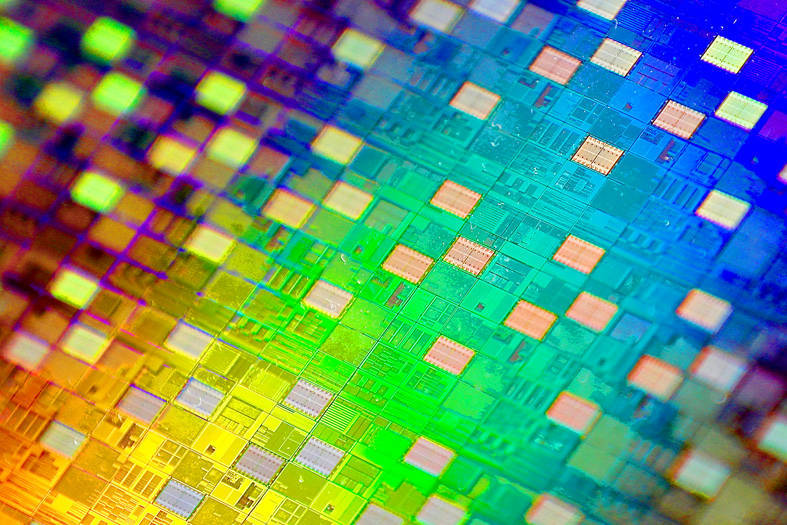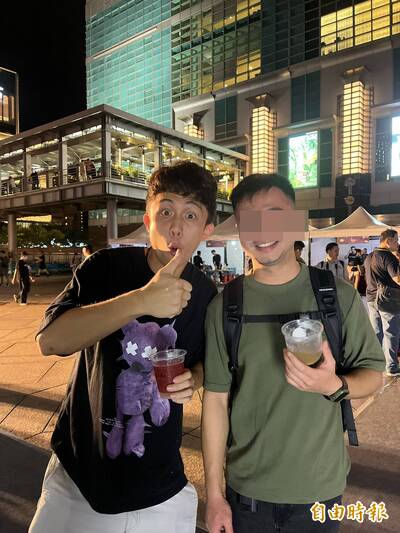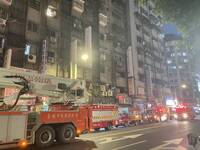《TAIPEI TIMES》 Morris Chang meets with Japanese PM

A silicon wafer is displayed at the Semicon Taiwan trade show in Taipei on Sept. 15 last year. Photo: Ritchie B. Tongo, EPA-EFE
EXPANSION: Both men agreed Taiwan and Japan should keep improving relations. Meanwhile, TSMC is finishing its fab in Kumamoto, with a possible second to come
/ Staff Writer, with CNA
Taiwan Semiconductor Manufacturing Co (TSMC) founder Morris Chang (張忠謀), who is representing Taiwan at the APEC summit, met with Japanese Prime Minister Fumio Kishida on Friday to discuss forming a closer semiconductor partnership.
In their meeting on the sidelines of the APEC summit on Thursday and Friday, Chang and Kishida agreed that further cooperation would help cement the strong relationship between the Taiwan and Japan, Taiwan’s delegation to the APEC Economic Leaders’ Meeting said.
TSMC is building a wafer fab in Kumamoto, in southern Japan, as part of a joint venture with several Japanese partners, with commercial production employing the 12, 16 and 28-nanometer processes set to begin next year.
In March 2021, TSMC also set up its TSMC Japan 3DIC Research and Development Center, a subsidiary located in the Tsukuba Center of the National Institute of Advanced Industrial Science and Technology near Tokyo, to develop high-end integrated circuit packaging and testing services and provide one-stop services to clients.
The Japanese research and development center inaugurated a clean room facility in June last year. TSMC is also studying the possibility of building a second wafer fab in Kumamoto.
In addition to discussing economic cooperation with Chang, Kishida voiced his support for Taiwan’s participation in international organizations such as the WHO and the International Civil Aviation Organization, Taiwan’s delegation said.
Kishida also encouraged Japan and Taiwan to make joint contributions to the international community through the Global Cooperation and Training Framework, which aims to bring together experts from across the world to facilitate knowledge exchange.
Kishida reiterated Japan’s stance on maintaining peace and stability across the Taiwan Strait, and Chang expressed gratitude to Kishida for highlighting his emphasis on the matter.
Also on Friday, Singaporean Prime Minister Lee Hsien Loong (李顯龍) posted a photograph on Facebook of him and Chang having tea on the sidelines of the summit.
Lee said on Facebook that he and Chang had met at last year’s APEC Economic Leaders’ Meeting in Bangkok and had gotten to know each other.
Chang said that many APEC leaders wanted to hear about Taiwan’s experiences regarding semiconductor development.
In addition to expansion plans in Kumamoto, TSMC is spending US$40 billion to build two advanced wafer fabs in the US state of Arizona: One fab is expected to begin mass production in 2025, using the advanced 4-nanometer process, a year behind schedule due to a lack of skilled construction workers. The other fab is expected to begin mass production in 2026, using the 3-nanometer process, the latest technology that the Taiwanese chipmaker began using in mass production at the end of last year.
Despite TSMC’s investments in Arizona, Chang said it is impossible in the short term for the US to have a semiconductor company with production capacity that could rival Taiwan’s.
Citing the Creating Helpful Incentives to Produce Semiconductors (CHIPS) and Science Act, Chang said the investments by the US government under the act are relatively small compared with the US$30 billion TSMC spends annually on production expansion and technology upgrades.
According to the act, the US government is to inject US$52.7 billion into the US’ semiconductor industry to shore up its manufacturing and research and development strength. That includes US$39 billion in subsidies to help companies build new facilities and expand operations in the US, including TSMC.
On the last day of the APEC summit, Chang and his wife, TSMC Charity Foundation chairwoman Sophie Chang (張淑芬), held a banquet to express their gratitude for their warm reception at APEC, with several political and semiconductor heavyweights in attendance.
Morris Chang’s dinner guests included former US House of Representatives speaker Nancy Pelosi, who visited Taiwan in August last year, and Taiwan-born US Representative Ted Lieu (劉雲平).
Among the visiting US business tycoons were Nvidia Corp CEO Jensen Huang (黃仁勳) and Supermicro CEO Charles Liang (梁見後).
新聞來源:TAIPEI TIMES


















